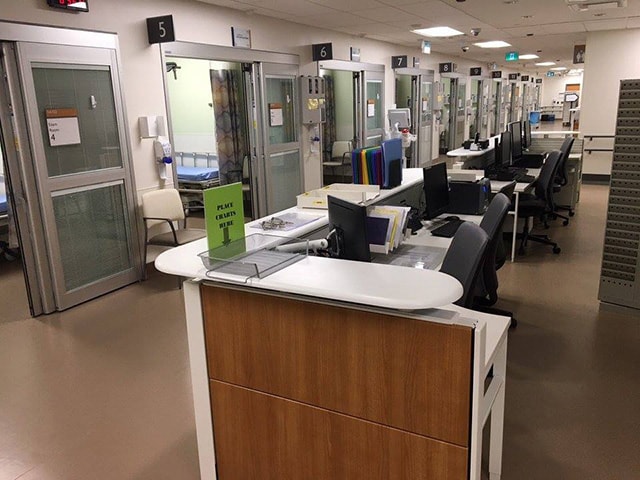Are Shorter Wait Times Coming to Brampton Civic?
Published April 24, 2018 at 12:09 am

Though no one wants to end up in the hospital, people want their experience to be as quick and courteous as possible.
And the shorter the hospital stay, the better.
Though no one wants to end up in the hospital, people want their experience to be as quick and courteous as possible.
And the shorter the hospital stay, the better.
Recently, the province announced that it’s prioritizing lowering wait times in Ontario hospitals with a $19 billion investment in health care and an “expanded innovative bundled care program.”
The province says it’s investing $187 million to reduce wait times by adding more hospital beds including new medical and surgical beds, mental health beds and beds for long‐term ventilated patients.
“Premier Wynne highlighted the government’s commitment, which represents an increase of $822 million, or 4.6 per cent, in funding for day-to-day operations,” reads a recent statement from the province.
“This will allow hospitals to invest with more precision in the care and supports that further reduce wait times and address the specific needs of their patients and community.”
According to the province, patients will soon see reduced wait times for hip, knee, cataract, shoulder, cornea and spine surgery.
Shorter wait times would also mean that hospitals in turn get the resources to expand other services like cardiac care, critical care, chemotherapy and treatment for strokes.
Then, there’s Ontario’s Bundled Care program that’s getting expanded with a $25 million investment in 2018-19.
The expansion aims to “help patients return home sooner after surgery and reduce emergency room visits and hospital readmissions.”
“This innovative approach will play an important role in freeing up space in health care facilities by helping patients transition from hospital to home faster and with the right supports. Bundled care coordinates services and integrates funding for a patient’s full spectrum of care for a specific health issue — from the hospital right through to follow-up home care.”
This “bundled care” model was tested at six sites across Ontario, says the province, and it’s now grwing to 24 health care teams caring for hip and knee surgery patiences. According to the province, the pilot program showed that the bundled care program reduced visits to the emergency department by over 15 per cent within 30 days after surgery.
“In 2018-19, this expansion is expected to help more than 20,000 patients, increasing overall efficiency and freeing up hospital beds for more patients.”
Finally, the province is investing $300 million over three years in “new funding for long-term care, which will allow every home to hire a registered nurse, and sets a goal of increasing the provincial average to four hours of daily care per resident by 2022.”
“Our investments will mean hospitals can help more patients, and the bundled care program will mean faster recovery times and a better transition from surgery for tens of thousands of people across Ontario,” said Premier Kathleen Wynne.
“Put together, they will mean one thing: more space at hospitals to care for people when they need it.”
At Brampton Civic, it’s no secret that overcrowding plagues the facility.
Last year, a whopping 4,300 patients, often waiting anywhere from 40-70 hours for a bed, were stuck on stretchers in Brampton Civic’s hallways from spring 2016-spring 2017. Code Gridlock – basically meaning the hospital was overcrowded – was in effect for more than 65 days at Brampton Civic in 2017 alone.
Ontario NDP leader Andrea Horwath released a statement in September saying that, in 2017, occupancy rates in acute care were stuck at over 100 per cent and reaching as high as 109 per cent at Brampton Civic.
And Brampton Civic is the highest volume emergency department in the province, according to the Canadian Institute for Health Information.
So there might be some ways to go when it comes to reducing wait times in Brampton.
It remains to be seen how the province’s latest investments will impact hospitals in Brampton.
insauga's Editorial Standards and Policies advertising





